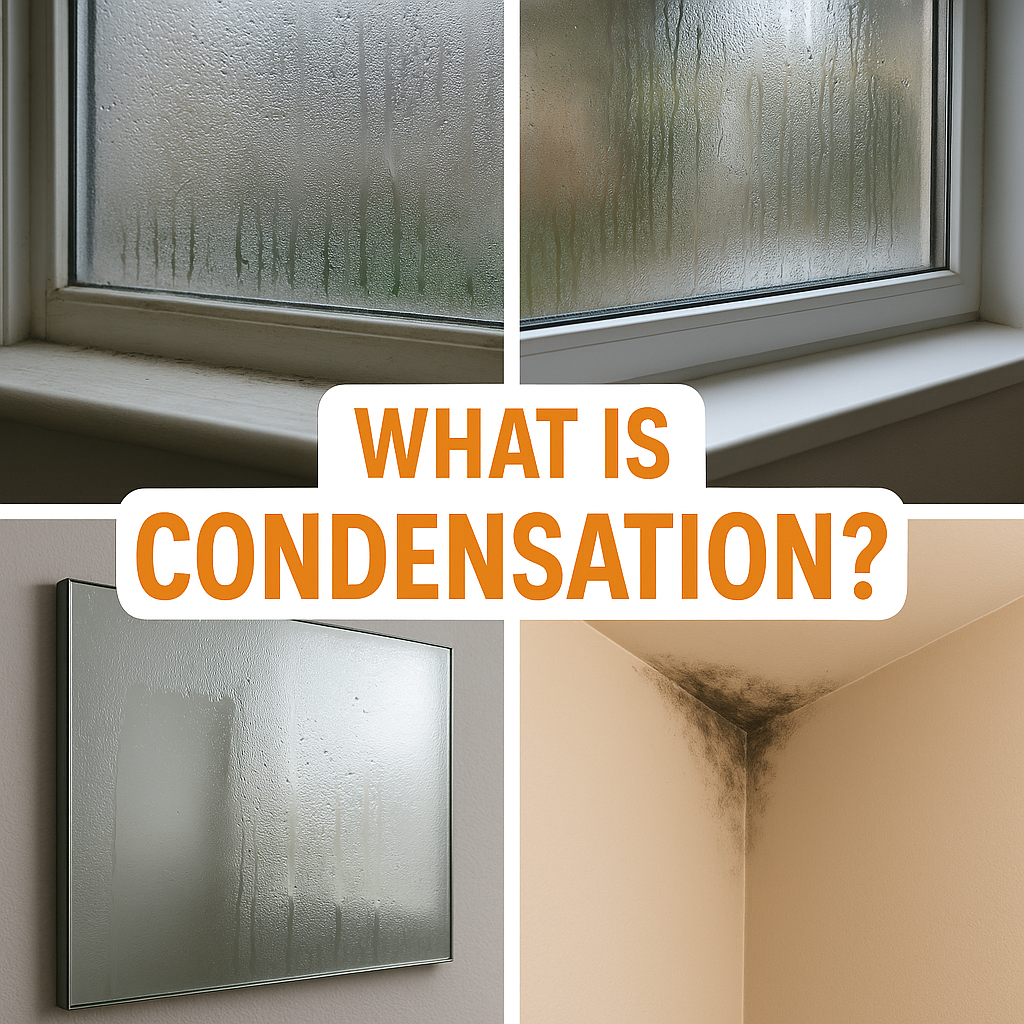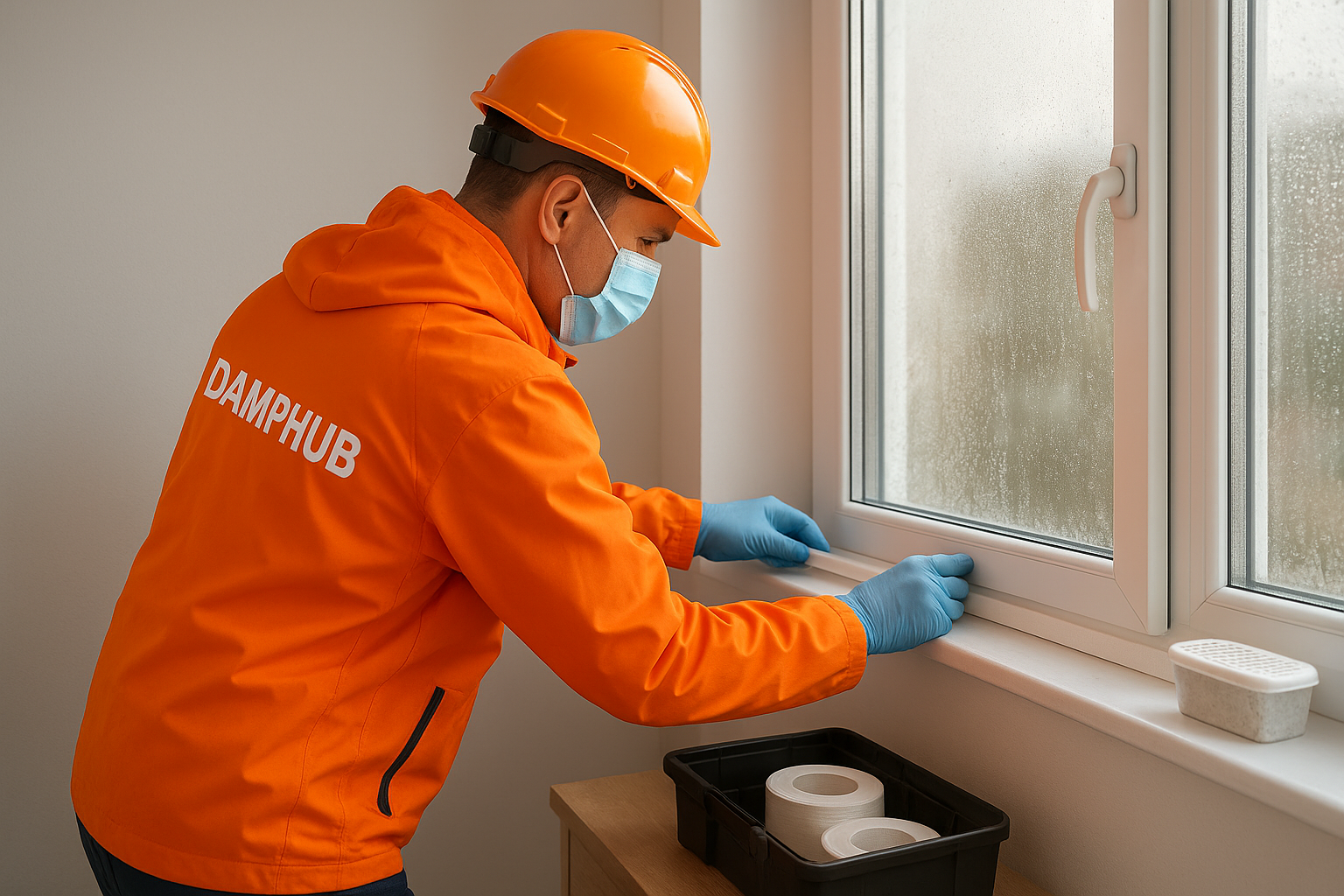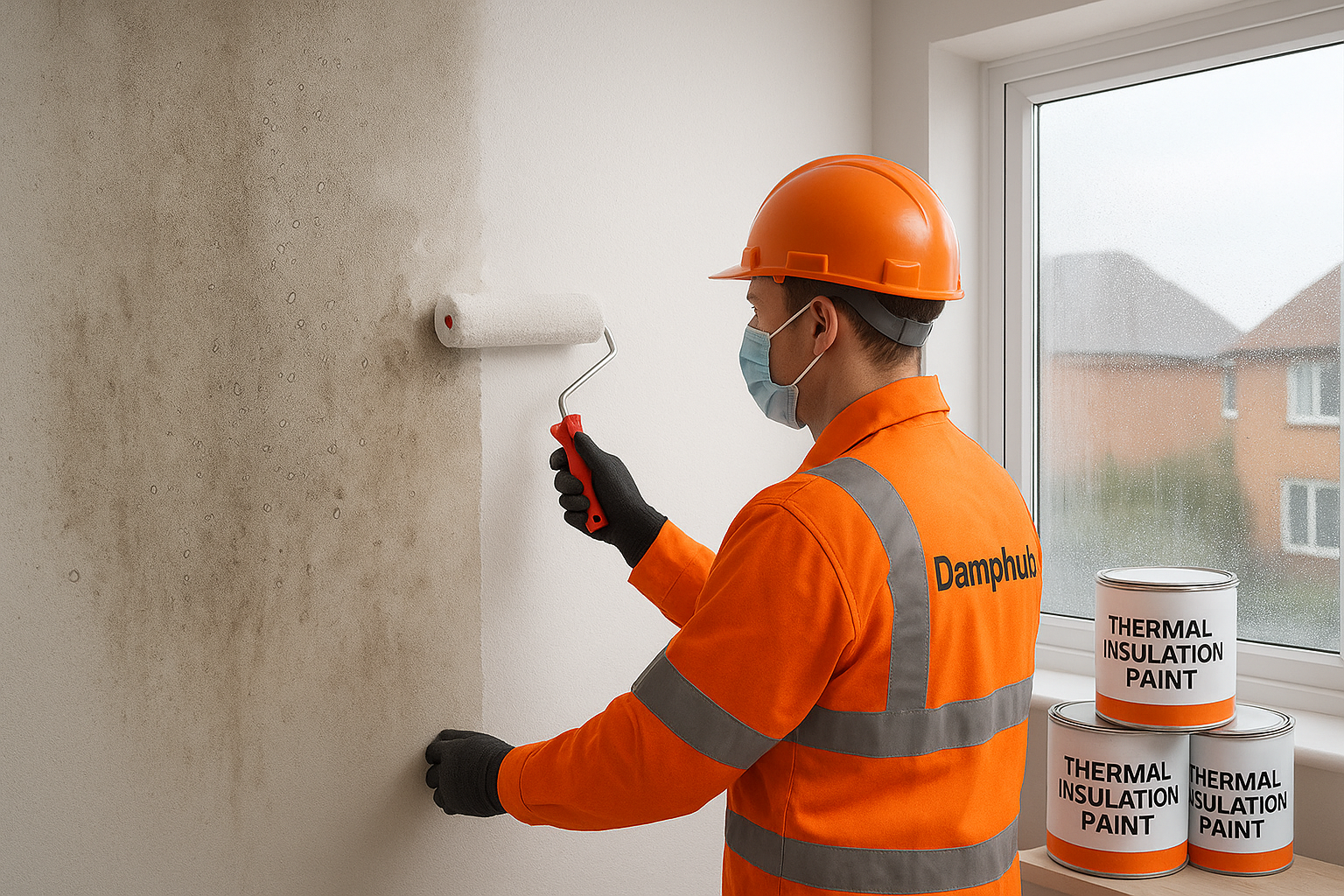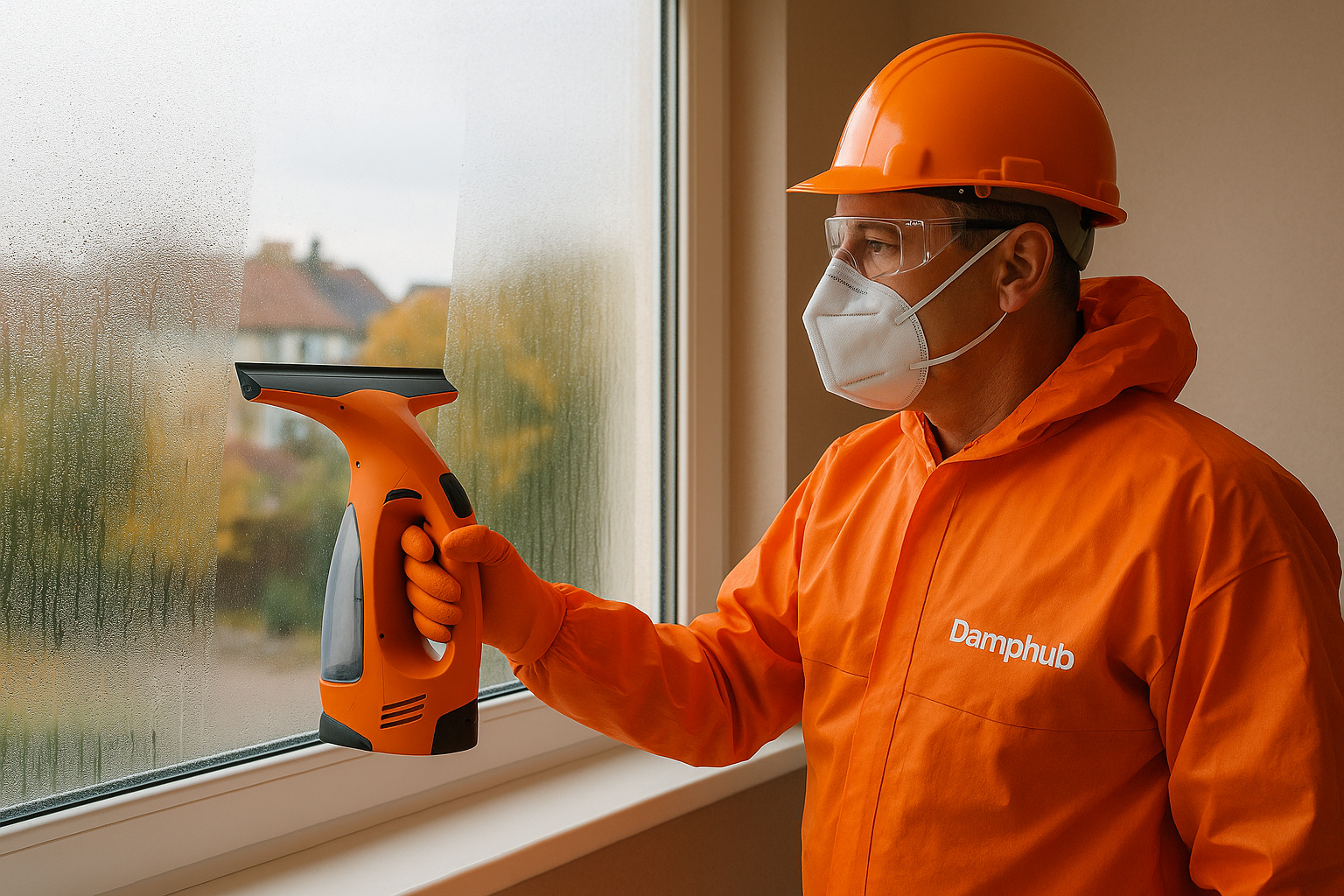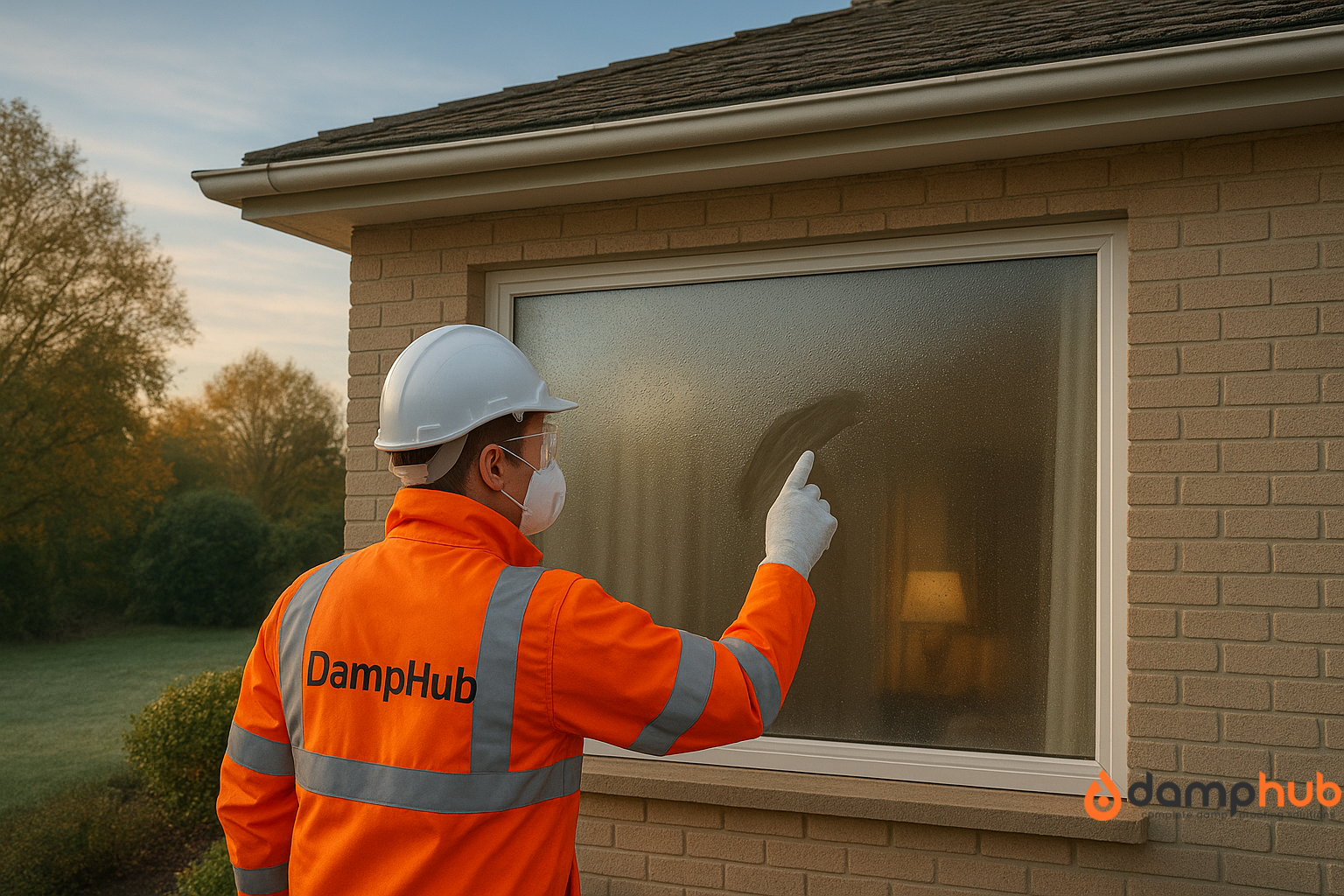
Wake up on a cold morning, open the curtains, and there it is: droplets running down the inside of the glass, sometimes so much that the sill is wet. Some people shrug it off as “just winter stuff,” but if you’ve noticed condensation inside windows more often, it’s worth investigating the cause while you still have time.
If you keep ignoring the problem, it’s not just the glass that gets damp. Paint may start to peel, timber may start rotting, or mould might spread, and before long, the damage can cost a small fortune.
So, let’s get into it properly. We’ll cover how to spot it, what it means, what actually causes it, and most importantly, how to stop condensation inside windows before it becomes a real headache.
But before that, here is our other post you might want to read: What is condensation?
How Do You Spot Condensation Inside Your Windows?
The signs are usually obvious, but they can vary. Sometimes you’ll just see tiny beads forming near the bottom of the pane. Other times it’s a full mist across the glass, almost like the window is fogged up. The water might trickle down, pooling on the sill, and in worst cases, you’ll spot damp patches on the plaster nearby.
If your frames are wooden, the paint might start to bubble or peel. Plastic uPVC frames don’t peel, but you might notice dark mould patches creeping across the corners. And if the silicone sealant around the edges is turning black? That’s a sure sign moisture has been left sitting there too long.
The key difference to note: condensation inside windows appears on the room-facing surface of the glass. If it’s trapped between panes of double glazing, that’s a whole other problem (it means the sealed unit has failed).
What Does It Mean When Condensation Is On The Inside Of House Windows?
It’s basically your house shouting: “Too much moisture in here!”
Condensation inside windows happens when warm, humid air indoors meets cold glass. The air cools, can’t hold as much water, and dumps it as liquid. Windows are usually the coldest surfaces in a room, so they’re the first place this shows up.
But does it always mean something serious? Not necessarily. Sometimes it’s just overnight breathing in a bedroom with the door shut. Other times, it’s a bigger sign that your home is holding onto too much moisture and struggling to vent it out.
And here’s a question a lot of people ask: Does condensation inside windows mean the house is too cold?
Well… partly. Cold rooms make condensation worse because glass surfaces get colder. But the real driver is humidity. Even in a well-heated home, if you’re cooking, showering, or drying laundry indoors without proper ventilation, the moisture has to go somewhere, and your windows take the hit.
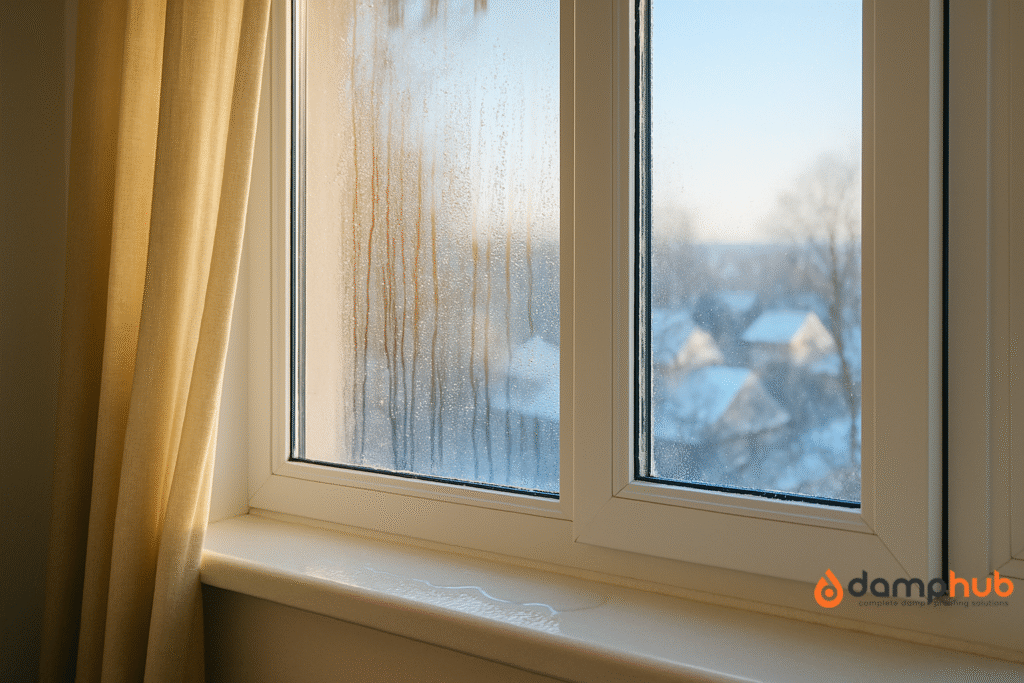
What Causes Condensation On My Inside Windows?
Several everyday things load the air with water vapour:
- Cooking without lids or extractor fans running.
- Showering or bathing in a closed bathroom with no fan.
- Drying clothes indoors on radiators or airers.
- Breathing—yep, even just that. Even a family of four can breathe out litres of water overnight.
Then you’ve got the home setup itself:
- Poor ventilation. If the air can’t escape, humidity builds up.
- Cold surfaces. Single glazing, or even older double glazing, gets colder than walls.
- Lack of insulation. Draughty homes lose heat, making glass even chillier.
In short, warm, damp air plus cold surfaces equals condensation.
Is My Window Leaking, Or Is It Condensation?
This one confuses a lot of people. Sometimes you’ll see water on a window and wonder: Is that from outside getting in, or just condensation?
Here’s the difference:
- Condensation sits on the glass or frame, usually worst in the mornings, and clears during the day if conditions improve.
- Leaks leave more consistent wet patches, sometimes staining plaster or dripping during rain.
If the water is appearing only when it’s cold outside and vanishes after airing the room, it’s condensation inside the windows. If it shows up during a storm and keeps coming back in the same spot, you might be looking at a leak.
Is Condensation Inside Windows A Health Risk?
It can be. On its own, a bit of foggy glass isn’t dangerous. But if that moisture isn’t wiped away, it creates perfect conditions for mould growth. And mould spores are bad news—especially for people with asthma, allergies, or weaker immune systems.
Even for healthy people, living with mould can cause coughing, throat irritation, or just that constant musty smell. The longer moisture sits on your windows, the more likely mould will form.
So yes, condensation inside windows can turn into a health risk if left untreated.
Good To Know
Kids’ bedrooms often get the worst of it because doors are kept shut overnight. That makes the air stuffy and humid, which means windows fog up fast. If you’re seeing condensation mainly in those rooms, it doesn’t mean the windows are faulty—it means the room needs more airflow.
How Do You Stop Condensation On Inside Windows?
Alright, here’s the real meat of it: how to fix it. The short answer is you can’t completely stop condensation—it’s a natural process. But you can reduce it massively by changing how moisture and airflow are managed in your home.
1. Ventilate Properly
- Open trickle vents if you’ve got them.
- Run extractor fans in kitchens and bathrooms (and keep them on a bit after cooking or showering).
- Air rooms daily by opening windows for 10–15 minutes, even in winter.
2. Reduce Moisture Production
- Put lids on pans.
- Dry clothes outside or use a vented tumble dryer.
- Don’t leave wet clothes sitting indoors overnight.
3. Keep A Steady Temperature
- Background heating helps stop windows from getting icy cold.
- Insulated curtains or blinds reduce the surface temperature gap.
4. Use Moisture Control Tools
- A dehumidifier is worth considering if you’re really struggling. Find the best ones in our comparison post and buying guide: 10 Best Dehumidifier for UK homes.
- Small moisture absorber tubs are cheap and good for wardrobes or corners.
- Get a hygrometer to monitor humidity (ideal range is 40–60%).
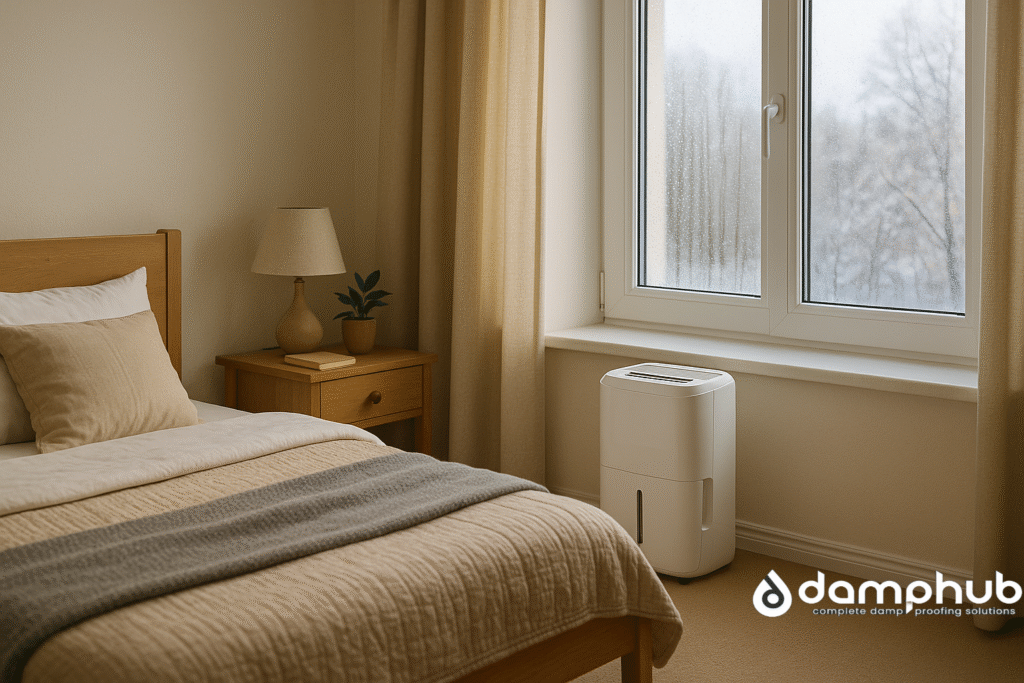
Pro Tip
If you’re running a dehumidifier, close the door of the room it’s in. That way it works on a controlled space rather than trying to fight the whole house at once. You’ll see the water tank fill up surprisingly quickly.
Follow these steps, and condensation inside windows will drop noticeably within a few weeks.
Condensation showing up on other parts of your windows? Check out our full guide: How To Stop Condensation On Windows – A Complete UK Home Guide.
When Replacing The Window Can Help With Condensation
Sometimes, no matter what you do, condensation keeps coming back. That’s when you need to ask whether the windows themselves are part of the problem.
- Single glazing: Almost always prone to condensation. Upgrading to double glazing makes a huge difference.
- Old double glazing: If seals are failing or the unit is cold at the edges, replacement helps.
- No trickle vents: Modern frames often include these, giving built-in ventilation.
But remember—new windows don’t magically remove moisture from the air. They just make it harder for condensation to form. So if your home is very humid, you’ll still need to fix ventilation.
Try This
Before spending money on new windows, try adding secondary glazing film to a single-glazed window. It’s cheap, easy to apply, and adds an insulating layer that can reduce condensation more than you’d expect.
Final Thoughts
Condensation inside windows might seem like a minor winter nuisance, but it’s your home telling you something’s off. Too much moisture, not enough airflow, glass that’s colder than it should be—it all adds up.
The fixes aren’t glamorous, but they work: ventilate properly, reduce the moisture you’re adding, keep the house warm enough that surfaces don’t chill too much, and wipe away water when it shows up. Tools like dehumidifiers or window upgrades can help, but most of the battle is in daily habits.
Learn to manage condensation inside windows, and you won’t just save your glass from fogging up. You’ll protect your walls, frames, and most importantly, the health of everyone living there.
Answering Questions About Condensation Inside Windows

Is Condensation Normal In Windows?
A little, yes. It’s common in bedrooms, first thing in the morning or kitchens while cooking. But heavy, constant condensation isn’t normal and points to a bigger humidity issue.
Does Window Condensation Mean Mould?
Not automatically, but it creates the perfect conditions for mould to grow. If you’re wiping windows daily and ignoring the cause, mould is usually the next step.
Is It Bad To Sleep With Condensation On Windows?
It’s not the condensation itself that’s bad—it’s the mould risk. Overnight moisture on windows isn’t harmful in the moment, but if it’s happening every night, it can lead to long-term damp problems in the bedroom.
Do Curtains Make Condensation Worse?
They can. Heavy curtains trap humid air against the cold glass, making the condensation worse. Opening them in the morning and allowing airflow behind them helps.
When To Worry About Condensation On Windows?
Occasional mist in winter is normal, but you should be concerned if water regularly collects on the sill, mould appears, paint or timber starts to peel or rot, or condensation shows up in unusual places. Persistent issues like these can lead to structural damage and health risks, so it’s best to address them promptly.

